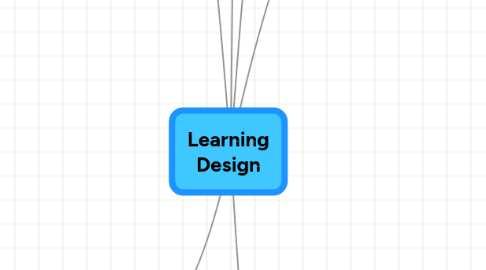
1. WHAT PRODUCTs
1.1. Examples
1.1.1. E-learning
1.1.2. Multimedia Packages
1.1.3. Educational Digital Video
1.1.4. Educational Websites
1.1.5. Blanded Learning Packages
1.1.6. Assessment Systems
1.1.7. Learning Objects
1.1.8. Educational Games
1.1.9. Educational Electronic Devices
1.1.10. Podcasts, iTuneU, E-books
2. CONSIDERATION
2.1. Constraints
2.1.1. Learning Objective
2.1.2. Subject Content
2.1.3. Learner Characteristics
2.1.4. Learning Activities
2.1.5. Instructional Resources
2.1.6. Support Services
2.1.7. Learning Evaluation
2.1.8. Pretesting
2.1.9. Platform
2.1.9.1. Web2.0
2.1.9.1.1. Innovation
2.1.9.1.2. Affordances
2.1.9.1.3. Examples
2.1.9.2. Mobile Devices
2.1.9.2.1. Devices
2.1.9.2.2. Function
2.1.9.2.3. Affordances
2.2. Educational Psychology
2.2.1. Learning and Cognition
2.2.1.1. Behavioral perspective
2.2.1.2. Cognitive perspective
2.2.1.3. Developmental perspective
2.2.1.4. Social cognitive perspective
2.2.1.5. Constructivist perspective
2.2.2. Motivation
2.3. Learning Models
2.3.1. Instructivist Models
2.3.1.1. Drill and Practice
2.3.1.2. Computer-based Tutorials
2.3.1.3. Intelligent Tutorial systems
2.3.1.4. Gange's 9-events of Instruction
2.3.1.5. Reusable Learning Objects
2.3.2. Constructivist Models
2.3.2.1. Learning environments
2.3.2.2. Technology as a tool in a learning activity
2.3.2.3. Inquiries and problem solving
2.3.2.4. Cognitive tolls
2.3.2.5. On-line collaboration and knowledge building
2.3.2.6. WebQuest and ActiveLesson
2.3.2.7. Interactive Learning Objects
3. WHO
3.1. Project manager
3.2. Instructional designer
3.3. Interface designer
3.4. Multimedia designer
3.5. Programmer
3.6. Others
4. HOW
4.1. Context for Development
4.1.1. Outsourcing
4.1.2. In-House
4.1.3. Buy Exiting Product/Solution
4.2. Model
4.2.1. Linear Model
4.2.2. Spiral Model
4.2.3. Rapid Prototyping Model
4.2.4. Top-to-Bottom Model
4.3. STAGES
4.3.1. Analysis
4.3.1.1. 1. Needs Analysis
4.3.1.2. 2. Audience Analysis
4.3.1.3. 3. Environment Analysis
4.3.1.4. 4. Content Analysis
4.3.1.5. 5. System Analysis
4.3.1.6. 6. Feasibility Analysis
4.3.1.7. 7. Risk Analysis
4.3.1.8. 8. Project Proposal
4.3.2. Design
4.3.2.1. 1. Define a Goal(s)
4.3.2.2. 2. Conduct Instructional Analysis
4.3.2.3. 3. Analyze Learners and Context
4.3.2.4. 4. Write Learning Objectives
4.3.2.5. 5. Develop Assessment Strategy
4.3.2.6. 6. Develop Instructional Strategy
4.3.2.7. 7. Arrange Instructional Events
4.3.2.7.1. Events of Instruction
4.3.2.7.2. Strategy
4.3.2.8. 8. Develop a set of Flowcharts
4.3.2.9. 9. Develop Storyboards
4.3.2.9.1. Form Example
4.3.2.9.2. Evaluation
4.3.2.10. 10. Write Design Specifications Document
4.3.2.10.1. Screen area presentation
4.3.2.10.2. Authoring plathform
4.3.2.10.3. Quality and format of graphics, videos, audio, and other media
4.3.2.10.4. Pedagogical considerations
4.3.2.11. 11. Develop a Prototype
4.3.2.11.1. Interface Design
4.3.2.11.2. Interaction Design
4.3.2.11.3. Presentation Design
4.3.2.11.4. Evaluation
4.3.2.12. 12. Review and Evaluate Project Documentation
4.3.3. Development
4.3.4. Implementation
4.3.5. Evaluation
4.3.5.1. BY
4.3.5.1.1. Project Team
4.3.5.1.2. Editor
4.3.5.1.3. Client
4.3.5.1.4. Content Matter Expert
4.3.5.1.5. Representative of Real User
5. WHOM
5.1. Book Publishing Industry
5.2. Film Industry
5.3. Software Industry
6. TRENDS
6.1. 1. Yesterday
6.1.1. Tutorial Systems
6.1.2. Computer-based Learning
6.1.3. Programmed Instruction
6.1.4. Instructional Design
6.2. 2. Yesterday - Now
6.2.1. Interactive Representations
6.2.2. Learning Objects
6.2.3. Content that fit's Learning Contexts
6.2.4. Learning Design
6.3. 3. Now - Tomorrow
6.3.1. Learners as Designers
6.3.2. Mashing
6.3.3. Collective Design
6.4. 4. Tomorrow
6.4.1. Context Sensitive
6.4.2. Dynamic Content
6.4.3. Multiple senses
6.4.4. Balancing of Prespectives, Possibilities and Predictions
6.4.5. Super-intelligent Design
